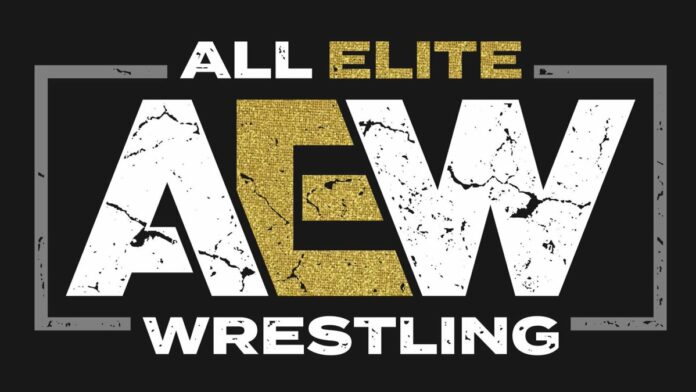
Will All Elite Wrestling be more than a t-shirt company?
There are those that attempt to be contrarian to sound knowledgeable or try to prove they somehow know more than others. Since the official launch of AEW at the start of the year, there was a continuous debate among fans about the true status of the project started by Cody and The Young Bucks. While Dave Meltzer’s claim that the “All Out” event could’ve sold out a stadium is bizarre and absurd, the actual numbers that All Elite Wrestling have generated prove that there’s certainly the potential for a new era of professional wrestling, something the industry has needed for nearly two decades. Anyone that claims that AEW doesn’t have a chance to make a major impact upon the sports entertainment landscape is simply being foolish. Granted, not everything that All Elite does is perfect, and it might not be for everyone, but the numbers tell an intriguing story ahead of their October debut on TNT.
To put things into the proper perspective, a look at the actual numbers, not estimates or projections, explains the level AEW might be able to reach if they can get off the ground on a long-term basis. As far as attendance goes, a live draw is one of ways to indicate the interest in a product. For example, when TNA drew some embarrassingly low numbers of just a few hundred for house shows at minor league baseball stadiums, it proved that they weren’t providing or marketing a product that the fans wanted to pay to watch, which was also represented in their meager pay-per-view buy rates. At the All In event last year, the predecessor to All Elite, the Elite trio ran a 10,000-seat venue based on a bet with Meltzer. Mostly through social media buzz, the event at the Sears Center in Chicago sold out in less than thirty minutes. No professional wrestling card outside of the WWE umbrella had sold that many tickets since the heyday of World Championship Wrestling.
For comparison, the highest attendance in the history of TNA was the Lockdown pay-per-view in 2013 with an estimated 7,200 fans in the building. That was at a time when the company had Hulk Hogan, Ric Flair, Kurt Angle, Rob Van Dam, Sting, AJ Styles, and Samoa Joe under contract. The Dixie Carter organization had established television distribution on Spike TV and some of the biggest stars in the history of the sport signed to the company. Extreme Championship Wrestling had its highest attendance at the Anarchy Rulz PPV in 1999 with 6,000 fans in Chicago for the show. This event was held just weeks after the promotion started on national TV with the infamous TNN deal.
The official start of All Elite Wrestling was the Double or Nothing pay-per-view in May that drew 12,000 fans to sell out the MGM Grand in Las Vegas, and garnered an estimated 100,000 buys, another statistic that hadn’t been seen outside of the WWE since the time of WCW. Fyter Fest last month that ran in conjunction with a video game convention, and Fight for the Fallen earlier this month drew roughly 5,000 fans respectively. It should be noted that both of those events were considered smaller events and were streamed on BR Live instead of broadcasted on PPV in the United States.
If the foundation of AEW leads to long term success remains to be seen, but the numbers prove that there’s a demand and a market for an alternative product in the industry.
Granted, just because an alternative is there doesn’t automatically translate to success, TNA is proof of that. Make no mistake about it, Tony Khan and the rest of AEW management will have to make the right decisions at the right time. Probably just as important, they will have to avoid the wrong decisions. Keep in mind, the brand has a die hard fan base and that allowed them to get this chance for a national TV deal, but at that level, the product will have to generate new fans for it to be success on a long term basis. The TNT show doesn’t necessarily have to take fans away from WWE, but rather just get a portion of those fans to want to watch another wrestling show each week. With the countless hours of WWE programming already on television, that isn’t as easy as it sounds because the modern era offers more channels for a viewing audience than any other time in history. Outside of the wrestling bubble, on a national level AEW will somewhat compete for the entertainment dollar as well.
Earlier this week, it was announced that the TNT show will air weekly on Wednesdays, debuting October 2 at the Capital One Arena in Washington, DC, a 15,000-seat venue. While the buzz for the start of TV might allow for a solid draw for the debut show, I hope they run smaller venues after that simply because it would be a difficult task for an upstart group to run WWE-level venues before its an established commodity. Remember, the Monday night war (not to say this is another ratings battle) didn’t start at a peak with record-setting ratings, but rather WCW spent a year and a half establishing the pieces of the puzzle on Monday night before the NWO angle made headlines. The point being, AEW will need to build the product and hopefully the audience going forward. That said, I would say that it will take at least a year gauge the status of All Elite as a TV product. I will be surprised if the TV tapings draw well consistently at the start of the touring schedule because it’s a very ambitious approach for a new group to run live TV events each week.
Reportedly, TNT is covering the production cost for the tapings, which would be a major positive for the potential of the AEW brand. While most die hard fans can quote the results of a random In Your House event from the 90s, some overlook the business side of the industry. The cost to run live weekly TV is exponential more than a set of tapings that covers multiple episodes. Each week the talent, crew, staff, and others must travel to the venues. There’s also the costs of a building rental and the advertisement dollars to promote the event locally to draw a crowd. If TNT covers the production costs then a major portion of the expenses won’t be on Tony Khan’s tab. All Elite won’t have to pay for a camera crew, production trucks, etc. In theory, it’s a win-win situation because the AEW TV show gives the network first-run live programming each week so that could boost ad revenue.
Quite literally, the bottom line to any business venture is the combination of revenue and profit. While the Khan family are billionaires, they didn’t get to that position because they ran businesses that lost money. Make no mistake, if AEW runs in the red in a few years, the Khan family will close up shop. This is where a common sense business approach is necessary, and there’s certainly a gamble to this project. Tony Khan offers comparable contracts to the WWE with a theoretical lighter schedule to get talent to sign a contract with the company. They are going to run weekly TV in an effort to build and sell a pay-per-view event. Along with that are ticket sales, merchandise, and buy rates. Obviously, the ability to establish and maximize those revenue streams are important to success.
If All Elite Wrestling gets off the ground remains to be seen, and it’s without question a tough task. It’s very possible that the novelty of AEW wears off after a few weeks on the road in October and they tape TV in front of 500 fans in a mostly empty arena. On the other hand, if an alternative product is truly established, it could reboot the business on a national stage, an aspect of the industry that has been rather stale the past few years. If I had to make a prediction on the prospect of AEW, it would be nothing more than a guess. However, I will say that the timing of the pieces of the puzzle have organically fit into place, which is usually how new eras of the sport have started before. Kenny Omega became one of the most popular gaijin in New Japan and had the chance to compete against Okada when the two are in the prime of their careers. The Young Bucks became extremely popular through social media and built a dedicated fan base. Cody was frustrated with WWE and asked for a release all within a few years. At the same time, there’s a certain amount of discontent with the WWE product and a demand for an alternative promotion. The totality of those aspects can’t be planned or manufactured so the status of the business might be right for AEW to shift the direction of the industry.
What do you think? Comment below with your thoughts, opinions, feedback and anything else that was raised.
Until next week
-Jim LaMotta
E mail [email protected] | You can follow me on Twitter @jimlamotta







